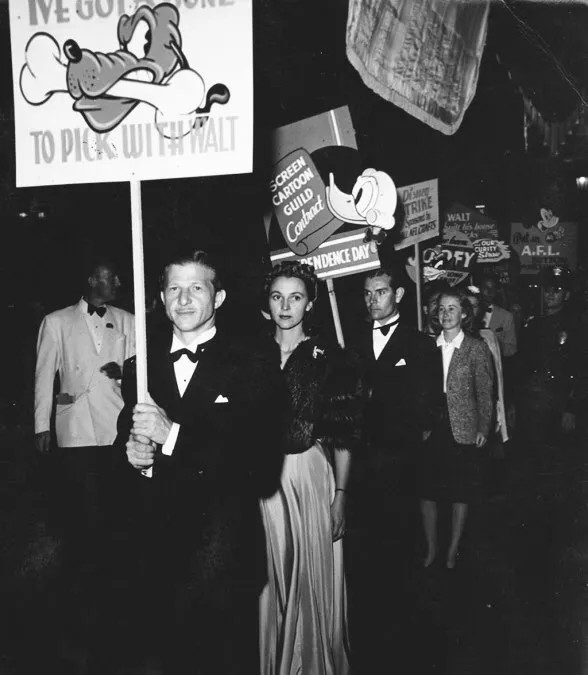The Disney animators’ strike of 1941 was a game-changer for animation — and it paved the way for the WGA strike.It has been almost a month since the Writers Guild of America (WGA) went on strike, and there is no sign of it ending soon. The WGA strike is a fight, in the words of writer-comedian Adam Conover, “for the survival of television and film writing as a sustainable career,” motivated by a breakdown in negotiations with Hollywood studios over pensions, residual pay for streaming productions, health care, and protections for writers rooms in the wake of AI.
This week marks the 82nd anniversary of a game-changing strike at Walt Disney Animation Studios, which sent shock waves throughout Hollywood and reshaped the American animation industry. The strike was not the first of its kind, but it was a critical moment for the American labor movement.
It was due to the company’s workplace culture throughout the 1930s, and to the production and theatrical release of 1937’s Snow White and the Seven Dwarfs, which transformed Disney from a popular animated-shorts house into a cultural powerhouse. The strike was part of the spirit of the times, but it was also due to the company’s workplace culture throughout the 1930s, and to one event in particular, the production and theatrical release of 1937’s Snow White and the Seven Dwarfs.
The Animation Guild IATSE Local 839 has successfully campaigned to unionize production workers at multiple animation studios, including Titmouse, Nickelodeon, ShadowMachine, and Green Portal Productions. It is important for fans and professionals to remember what can be gain through collective action and for studios to remember the perils of taking creative people for granted.

